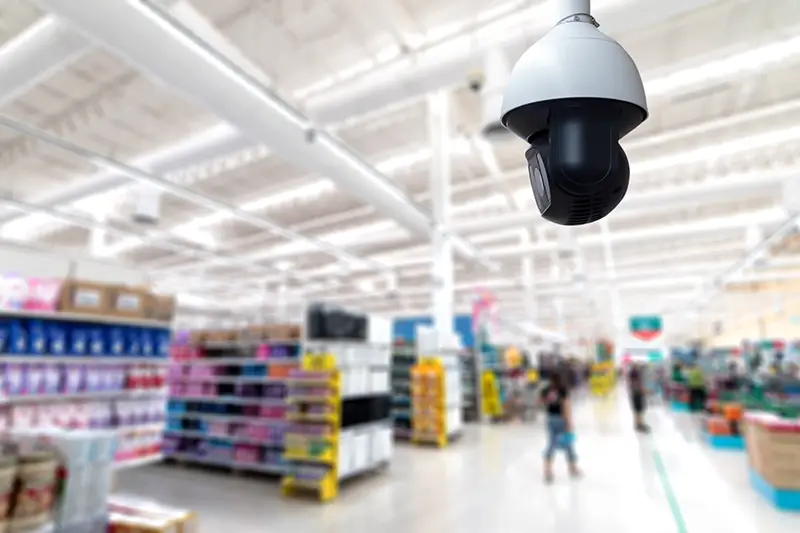Click here to get this post in PDF
In this day and age, one of the primary priorities of retail business owners is the security of their retail stores. Nearly all businesses today are vulnerable to theft crimes like burglary and shoplifting. Hence, regardless of how big or small your retail business is, security is a crucial aspect that you must take seriously.
As reported by the National Association for Shoplifting Prevention (NASP), the value of goods stolen from retail businesses per year is over USD$13 billion, equivalent to approximately USD$35 million worth of merchandise stolen daily. For that reason, as a retail business owner, it’s an essential responsibility to detect and prevent retail crime.
Fortunately, there are various steps you can take to prevent shoplifting cases in your business. Read the essential tips and advice mentioned below to help strengthen the security of your retail store.
1. Invest In Robust Security System
Security systems like alarm systems and video surveillance systems are excellent tools for preventing theft and improving your retail store’s security. To start, when customers are aware of a CCTV or video surveillance system in your store, they’re likely to be discouraged from attempting to steal anything from your store. On the other hand, customer theft may still occur, but having a robust security system installed in your retail store improves the chances of capturing shoplifters and reducing losses from theft.
Besides preventing customer theft, security systems like video surveillance can also help prevent unfortunate incidents within your internal team, like staff stealing at work and help you resolve the issue effectively.
Before installing video surveillance systems or CCTVs throughout your retail store, it’s essential to inspect their specifications and ensure they’re functioning well, and work on the security system placement plan.
2. Use Convex Security Mirrors
Another tool you can use to boost your retail store’s security measures is a convex mirror. Convex mirrors are durable, easy to install, and effective for reducing customer theft like shoplifting. You can buy them online from reliable websites, such as ESE Direct, that supply a wide range of industrial equipment.
If you’re wondering which are the best spots to place these mirrors, it’s best to select a corner mirror, especially if you have a small retail store with limited blind spots. Besides placing them in your retail store’s blind spots, it’s also best to put a convex mirror across the busy areas where your staff and customers enter and exit.
Overall, in addition to preventing theft, convex mirrors combined with CCTVs can help improve the overall safety of your retail store.
3. Integrate Access Control System
Another step to strengthen your retail store’s security is to use an access control system. Since nearly all systems rely primarily on the internet, it’s essential to ensure that only approved staff has access to secured areas of your store and sensitive data, such as PIN codes and customer payment information. With an access control system, only authorized individuals can access sensitive data and secure areas of your store.
By implementing robust methods of identification and entry, such as unique codes, PINs, and credentials, you’ll know when your staff arrives to work and what areas or data they access, which can help you prevent theft and accidents. Besides improving your retail store’s security and safety, transitioning to an access control system is worth considering, especially if you want to eliminate the hassle of using traditional keys.
4. Incorporate Electronic Article Surveillance
The electronic article surveillance (EAS) system features advanced technology that employs three primary components: an electronic tag, an electronic antenna, and a detacher or deactivator. Essentially, it’s an anti-shoplifting procedure that involves attaching tags to merchandise.
The antenna component of this system is placed at your store’s entrance and exit, which creates an invisible door or gateway. If the shopper passes by it and walks out of the store without you or a salesperson deactivating the EAS tag attached to the product or merchandise, an alarm will alert you immediately.
5. Provide Thorough Staff Training
Training your staff to pay attention to their surroundings and notice potential shoplifters is another step to improving your retail store’s security. To manage and deal with suspicious customers properly, you should provide your staff with training materials on company standards and ensure they’re all on the same page regarding company policies on unlawful behavior, threats, shoplifting, and other retail crimes.
One of the most challenging parts of engaging with potential shoplifters is confronting them without making a direct accusation. But the rule of thumb you and your salespeople should keep in mind is that it’s crucial to approach the shopper calmly before they walk out of the store. If your salespeople are adequately trained and know how to deal with a potential shoplifter, it can help you prevent unfortunate theft incidents and inventory shrinkage and reduce the risk of fraud in your business.
Conclusion
Overall, improving your retail store’s security is an ideal way to prevent potential retail crimes. Worrying about shoplifters, money fraud, and checkout fraud at your store can contribute to the stress of being a retailer. For that reason, consider the tips and advice given above to help strengthen your store’s security and ease your mind knowing that you can lower the chances of shoplifting cases in your retail store and preserve your profits.
You may also like: Considerations When Choosing an Access Control Security installer for Your Startup’s Building
Image source: AdobeStock


